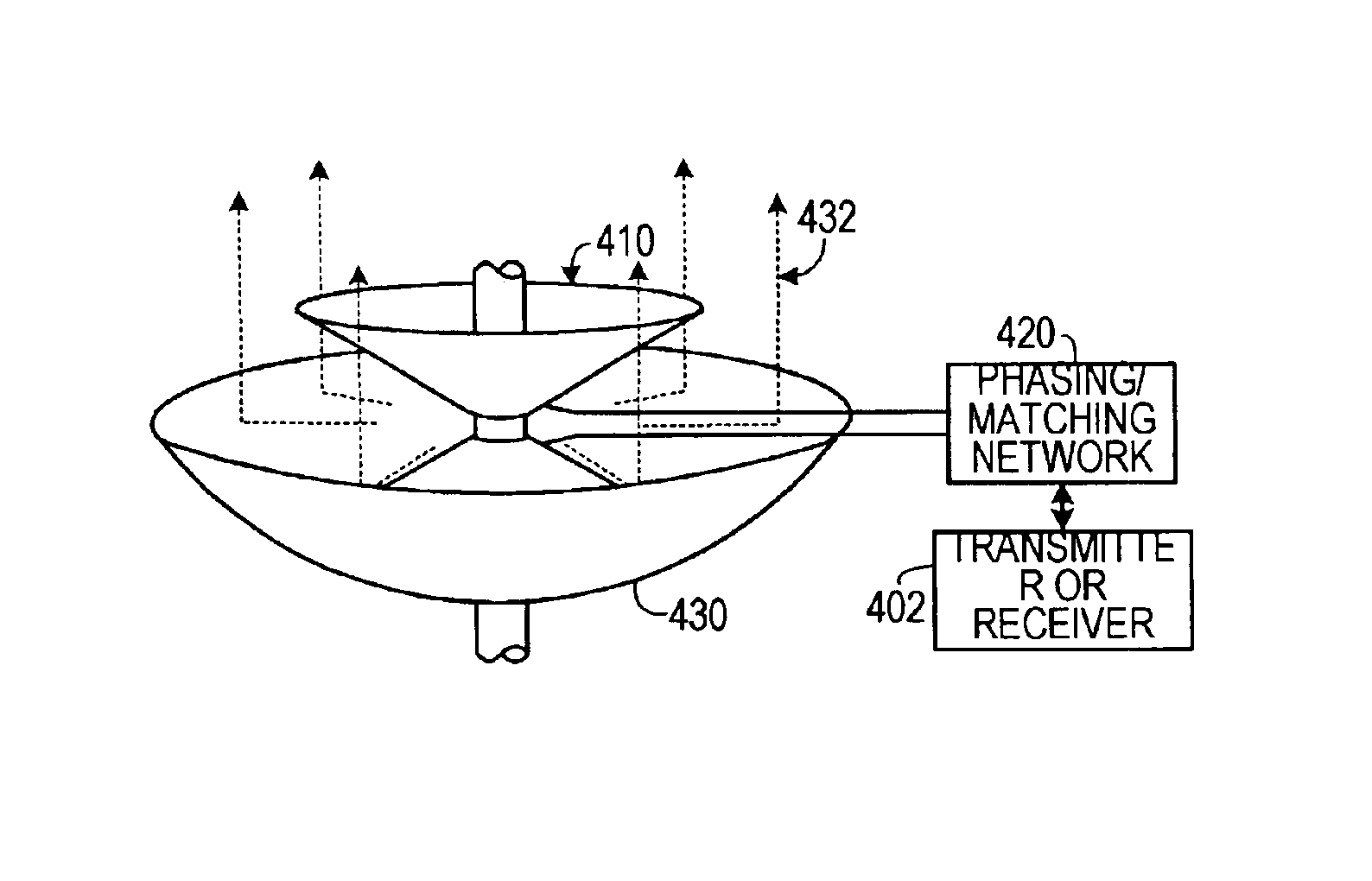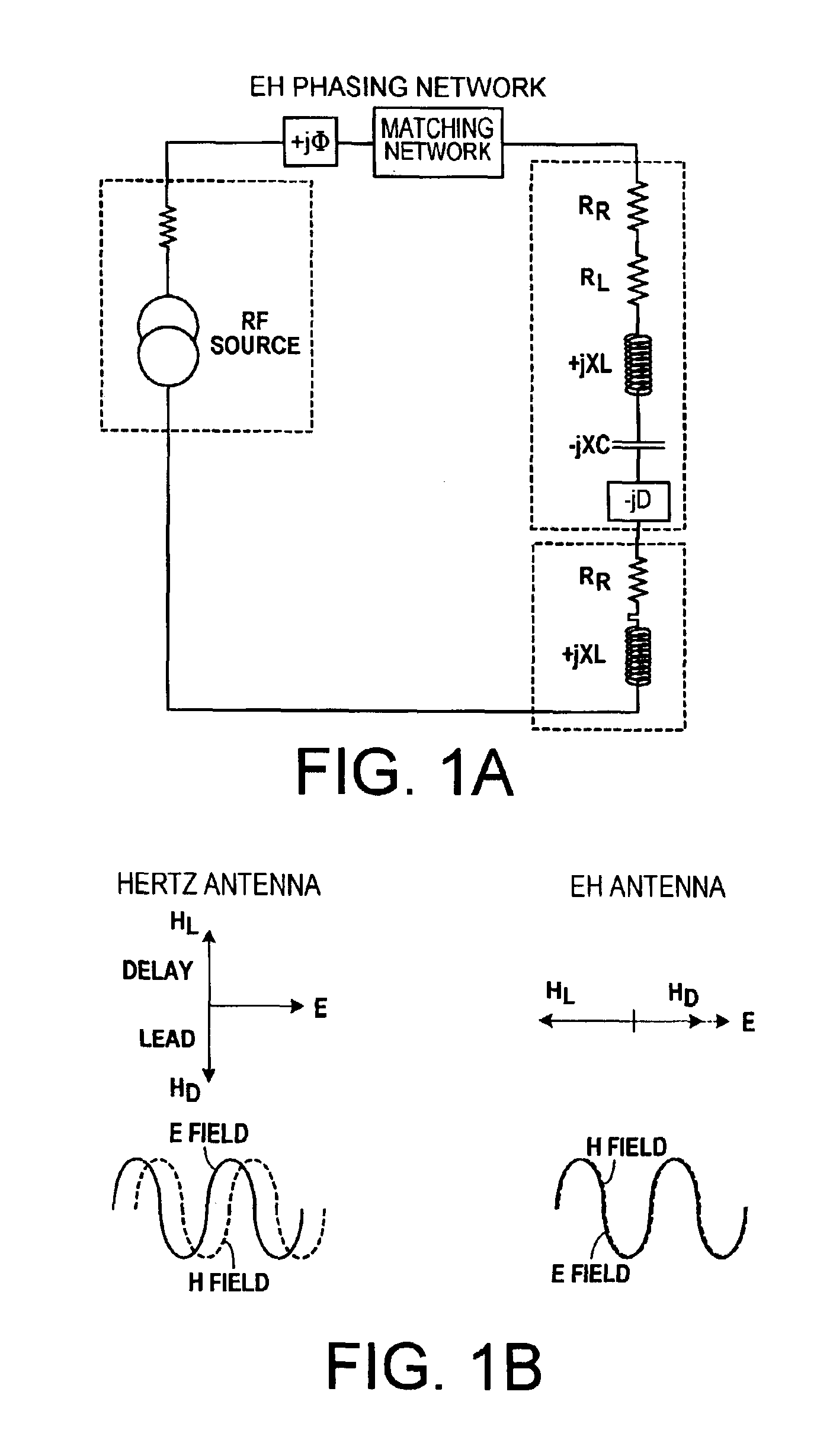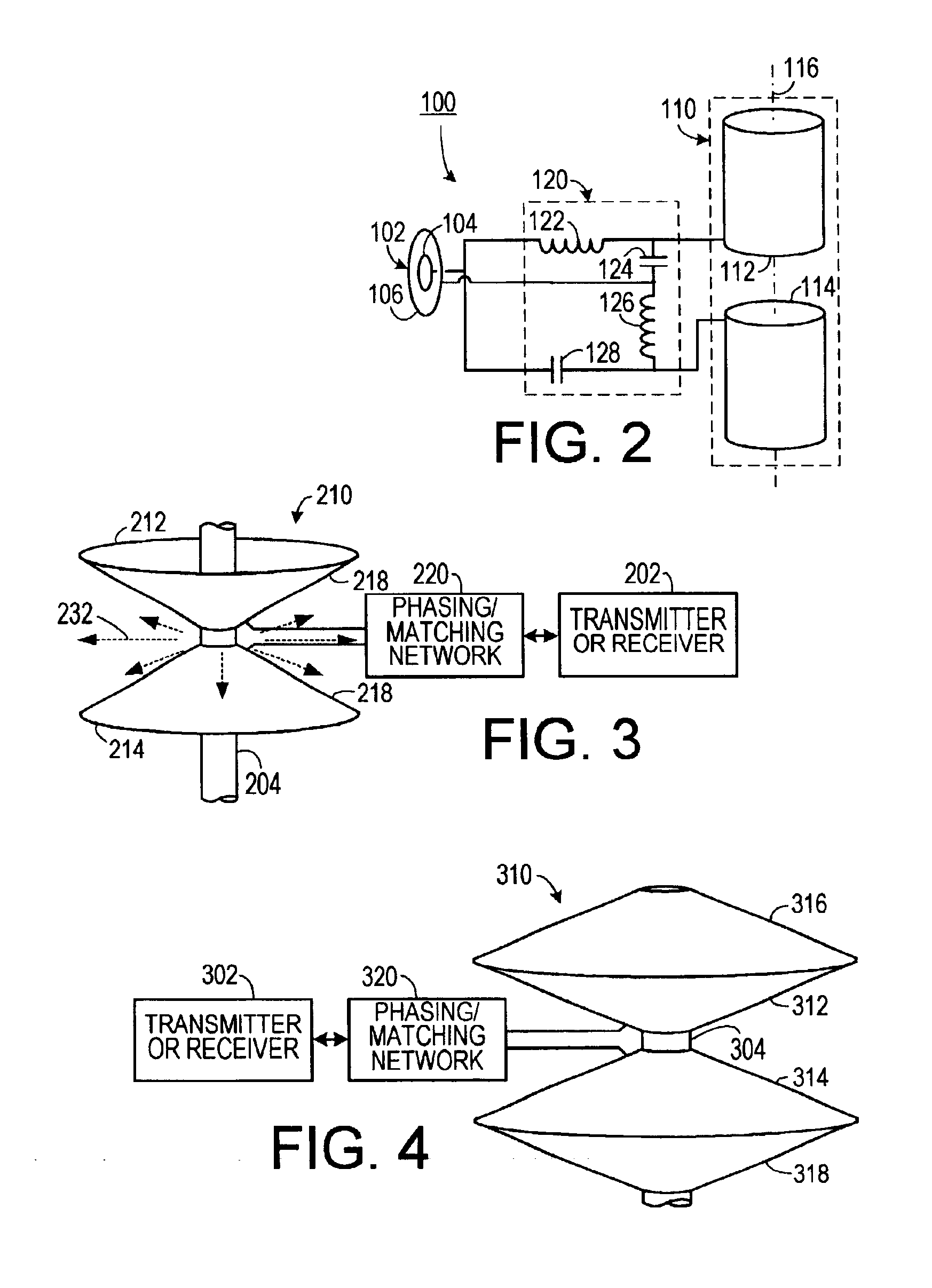Method and apparatus for creating an EH antenna
a technology of eh antenna and cross-field antenna, which is applied in the field of radio frequency communication, can solve the problems of complicated physical structure, large space required for typical wire antennas, and limited distance between readers and transponders
- Summary
- Abstract
- Description
- Claims
- Application Information
AI Technical Summary
Benefits of technology
Problems solved by technology
Method used
Image
Examples
Embodiment Construction
A preferred embodiment of the invention is now described in detail. Referring to the drawings, like numbers indicate like parts throughout the views. As used in the description herein and throughout the claims, the following terms take the meanings explicitly associated herein, unless the context clearly dictates otherwise: the meaning of “a,”“an,” and “the” includes plural reference, the meaning of “in” includes “in” and “on.”
A general discussion of Poynting vector theory may be found in the disclosure of U.S. Pat. Nos. 5,155,495 and 6,025,813, which are incorporated herein by reference.
The EH Antenna is a Hertz antenna driven with a phase shift network that allows radiation to occur at the antenna, with associated benefits. To put this in proper perspective, the equivalent circuit is shown in FIG. 1A. Note a RF source driving a EH Phasing Network followed by a matching network. The purpose of the matching network is to provide a conjugate impedance match to the antenna. For now, d...
PUM
 Login to View More
Login to View More Abstract
Description
Claims
Application Information
 Login to View More
Login to View More - R&D
- Intellectual Property
- Life Sciences
- Materials
- Tech Scout
- Unparalleled Data Quality
- Higher Quality Content
- 60% Fewer Hallucinations
Browse by: Latest US Patents, China's latest patents, Technical Efficacy Thesaurus, Application Domain, Technology Topic, Popular Technical Reports.
© 2025 PatSnap. All rights reserved.Legal|Privacy policy|Modern Slavery Act Transparency Statement|Sitemap|About US| Contact US: help@patsnap.com



